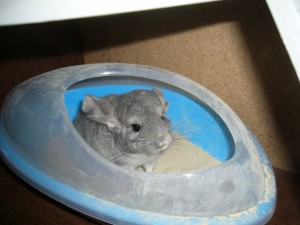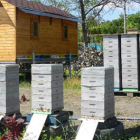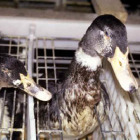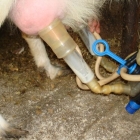 Bathing of chinshill differs from usual to us, but in their functions is an equally important hygienic procedure. What is the sand chinchilla? Swimming in the sand contributes to a delicate cleansing of furs from pollution, sweat, fungal dispute, as well as serves as the prevention of many diseases. Use of water to care for chinchilla unacceptable. As for the sand, the usual river for these purposes is also not suitable, it's not just that it is not sterile, Quartz scratches soft chinchilla fur, and does not allow to achieve the desired disinfecting and cleansing effect. It so happened that the birthplace of these cute creatures are places rich in volcanic dust, here it is necessary chinchillas for a full bathing.
Bathing of chinshill differs from usual to us, but in their functions is an equally important hygienic procedure. What is the sand chinchilla? Swimming in the sand contributes to a delicate cleansing of furs from pollution, sweat, fungal dispute, as well as serves as the prevention of many diseases. Use of water to care for chinchilla unacceptable. As for the sand, the usual river for these purposes is also not suitable, it's not just that it is not sterile, Quartz scratches soft chinchilla fur, and does not allow to achieve the desired disinfecting and cleansing effect. It so happened that the birthplace of these cute creatures are places rich in volcanic dust, here it is necessary chinchillas for a full bathing.
Sand, or rather, the dust is made from the clay mineral - the aluminosilicate of manganese, sepiolitis, whose deposits in America and Europe. For bathing, chinchilla is more often used, similar to properties, mineral - zeolite. Thanks to its low cost and accessibility, it is used on chinchillary farms, and also goes on sale for private owners.
Sand can have a different fraction and color. The reddish tint says that iron impurities are present in it, the yellow color is sulfur.
The use of bathing for chinchilla will be only if the sand is high quality, which means that it should have the following properties: bactericidity, the ability to absorb harmful substances and unpleasant odors, antifungal activity.
When Chinchilla bathes in the sand, it simultaneously gets rid of dirt and parasites. It is important to know how often such an animal procedure is necessary. If the room is warm and the temperature does not exceed 25 degrees, it will be enough one - two times a week, if it is hot, the chinchilla sweats, it naturally needs to be bought more often, perhaps even daily.
In order for the owner to have less trouble with the cleaning of the cell, as well as for the comfort of the chinchilla itself, you should get a convenient batch from which chinchillas will not be able to throw out sand. By the way, this will allow you to save it, as the portion of sand can be used repeatedly. Coupling put into the cage only when it is time for hygienic procedures, constantly do not hold it there. After each bathing, the sand is sifted through a small sieve, thus it will be necessary to change it more often than once every two to three months. The presence of lumps suggests that the sand is time to change to the new one.













 Start a discussion ...
Start a discussion ...